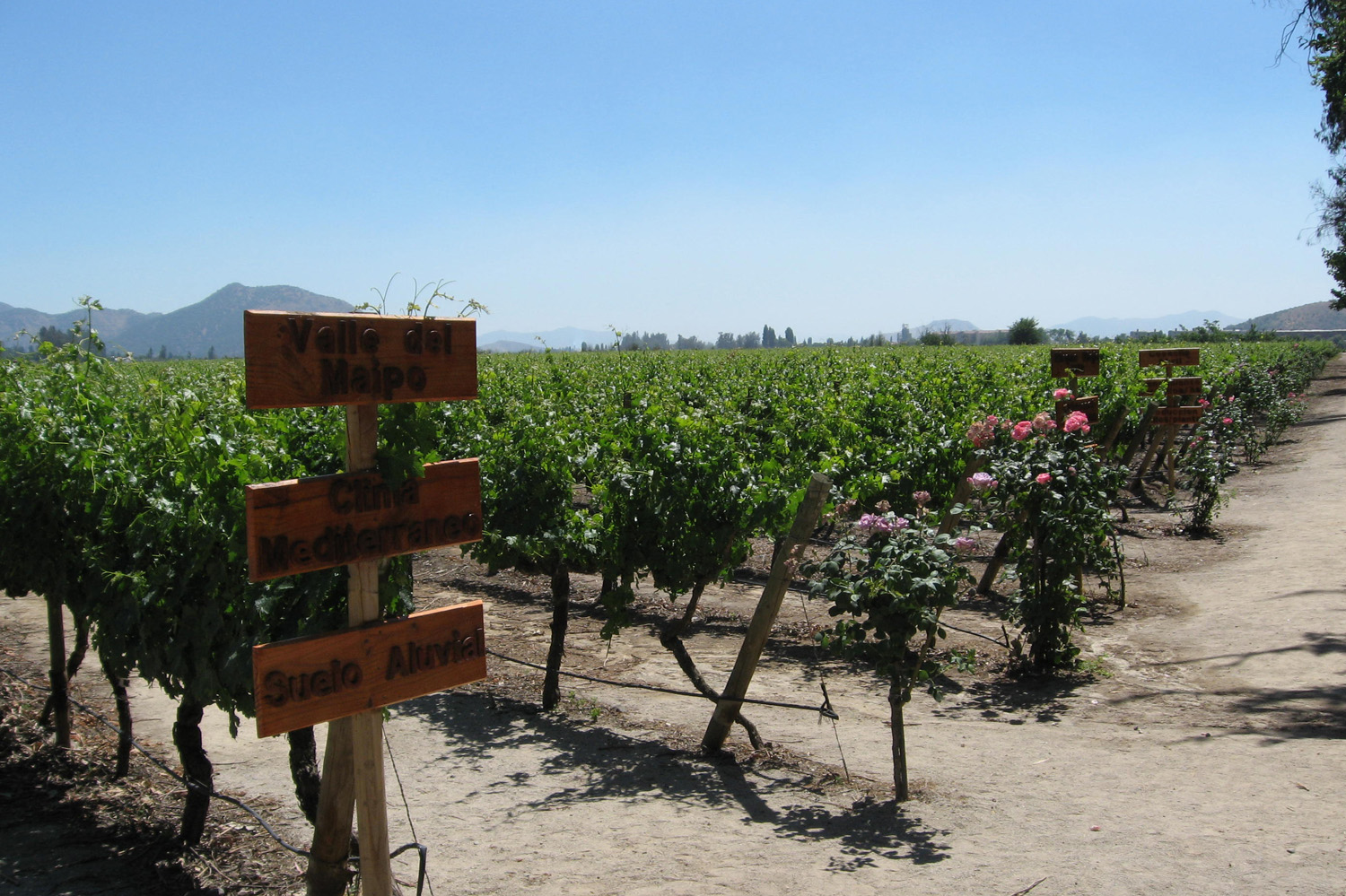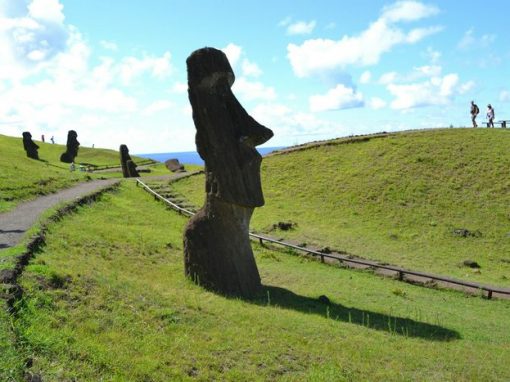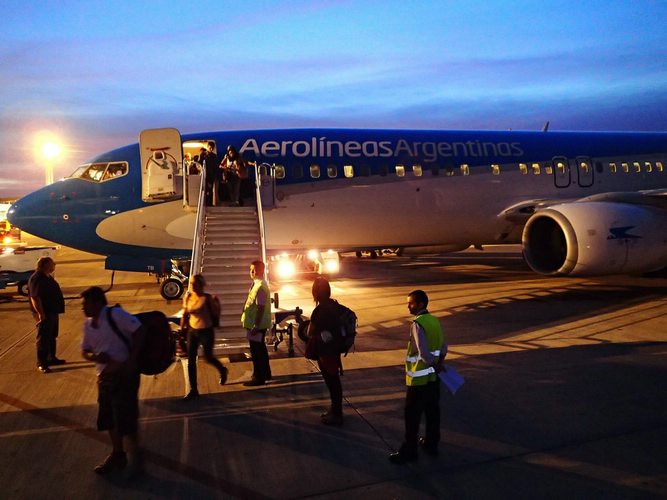From the sun-drenched valleys of Chile to the high-altitude vineyards of Argentina and the unique terroir of Uruguay, the continent boasts diverse wine regions that produce exceptional varietals. Whether you’re a seasoned sommelier or a casual wine lover, these top three wine destinations promise unforgettable tasting experiences, cultural insights, and scenic beauty that capture the spirit of South American winemaking. Let’s explore the finest wine spots where tradition meets innovation and every glass tells a story.
- Mendoza, Argentina
- Maipo Valley, Chile
- Montevideo, Uruguay
- Wine Culture and Traditions Across South America
- Pairing South American Wines with Local Cuisine
- Unique Wine-Tasting Experiences to Try
- The Best Times to Visit South America’s Wine Regions
- Sustainability in South American Wineries
Mendoza, Argentina
Overview
Mendoza, Argentina, is renowned as the country’s premier wine region, celebrated for its world-class Malbec and stunning vineyard landscapes. Located at the foothills of the Andes, Mendoza offers a unique terroir that produces rich, full-bodied wines, with over 70% of Argentina’s wine production taking place here. The region’s high-altitude vineyards, sunny climate, and irrigation from melted Andean snow create ideal conditions for grape growing, making Mendoza a haven for wine enthusiasts.
Popular Wineries
Bodega Catena Zapata
Bodega Catena Zapata, founded in 1902 by Italian immigrant Nicola Catena, is a world-renowned winery credited with elevating Argentine Malbec on the global stage. Led by Nicolás Catena Zapata and his daughter Laura, the winery is celebrated for its high-altitude viticulture, innovative winemaking, and exceptional quality. The estate features striking Mayan pyramid-inspired architecture and picturesque vineyards with the Andes Mountains as a backdrop. Visitors can enjoy guided tours exploring the history of Malbec, vineyard visits, and tastings of award-winning wines like Catena Alta Malbec and Nicolás Catena Zapata blend, showcasing Mendoza’s unique terroir.
Location: Find it here!
More Information: https://www.catenazapata.com/
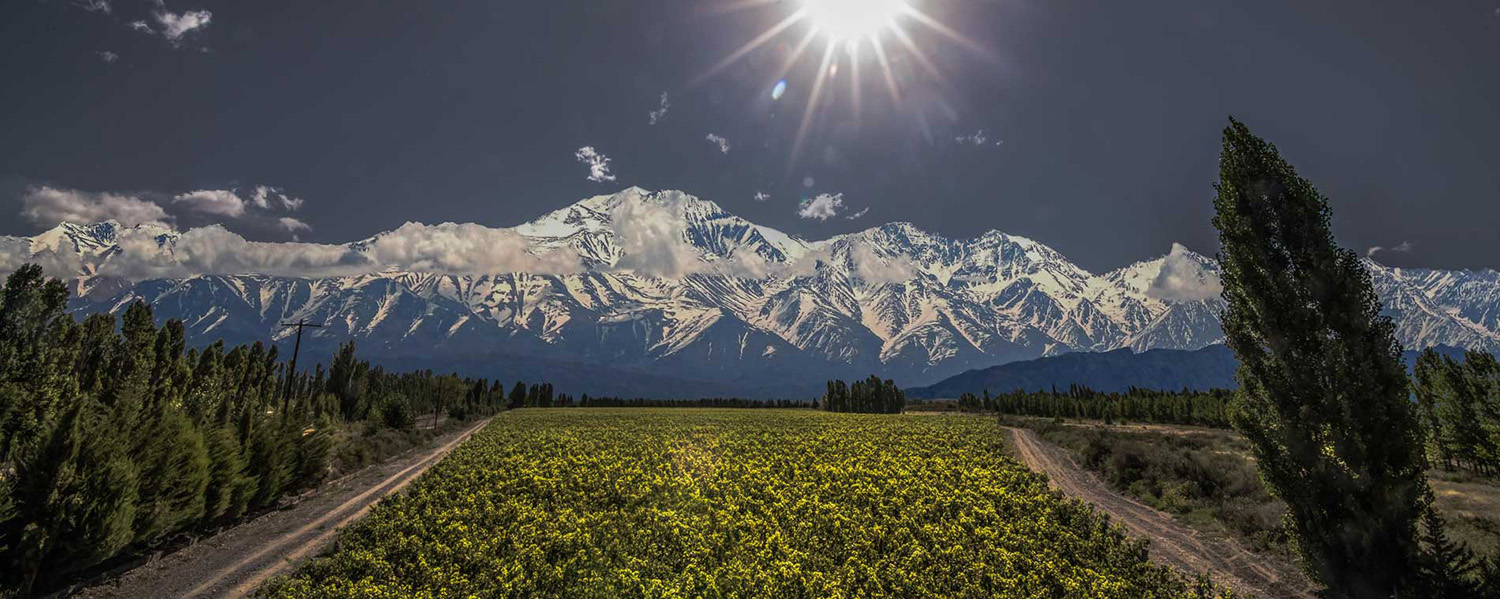
Achaval-Ferrer
Achaval-Ferrer is a renowned winery in Mendoza, Argentina, celebrated for its high-quality wines that reflect the region’s unique terroir. Founded by wine enthusiasts, including winemaker Santiago Achaval, the winery is recognized for its exceptional Malbec and Cabernet Sauvignon. Achaval-Ferrer’s minimalist winemaking philosophy prioritizes the grapes’ origins, sourcing fruit from select high-altitude vineyards that thrive in Mendoza’s distinct climate and soil. Their flagship wines, like the velvety Malbec and the complex “Quimera” blend, have garnered numerous accolades. Visitors can enjoy guided tours and tastings, making Achaval-Ferrer a must-visit destination for wine lovers exploring Mendoza’s vibrant scene.
Location: Find it here!
More Information: https://achaval-ferrer.com/
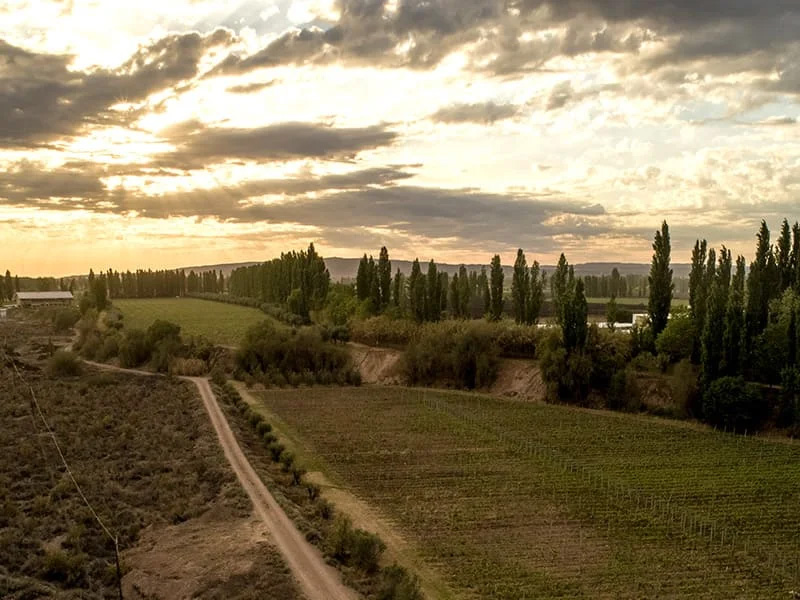
Bodega Norton
Bodega Norton, established in 1895 by English engineer Edmund James Palmer Norton, is one of Mendoza’s oldest and most iconic wineries, symbolizing Argentine winemaking. Located in Luján de Cuyo, at the foothills of the Andes, the winery benefits from high altitude, sunny days, and rocky soil, producing a variety of wines, particularly renowned Malbec, Cabernet Sauvignon, Merlot, and Chardonnay. Emphasizing sustainable practices and traditional techniques alongside modern innovations, Bodega Norton has gained international acclaim for its flagship wines like “Norton Reserva Malbec” and “Norton Privada.” Visitors can enjoy guided tours, tastings, and gourmet dining experiences, making Bodega Norton a must-visit for those wanting to immerse themselves in Mendoza’s rich wine culture.
Location: Find it here!
More Information: https://www.norton.com.ar/
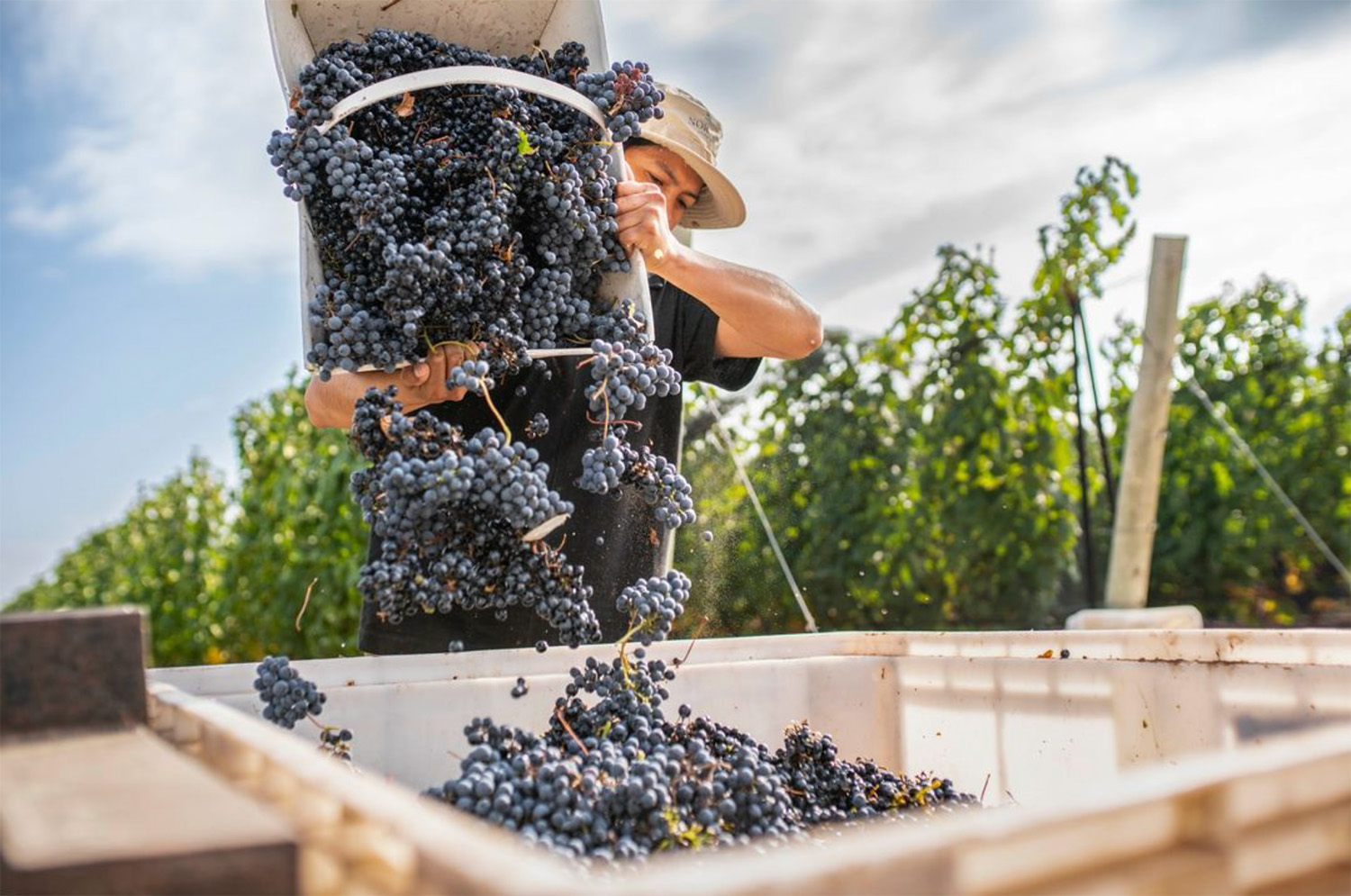
Festivals
Mendoza Grape Harvest Festival
The Mendoza Grape Harvest Festival, or Fiesta Nacional de la Vendimia, is one of Argentina’s most anticipated events, celebrating the region’s wine-making heritage and the grape harvest. Held annually in March, the festival lasts for several days and attracts visitors from around the globe, making it a highlight of Mendoza’s cultural calendar.
Key Features of the Festival:
- Opening Ceremony: The festivities kick off with an opening parade featuring colorful floats, traditional music, and dancers, showcasing the vibrant culture of Mendoza. The “Queen of Vendimia” is crowned, representing the beauty and spirit of the region.
- Wine Tastings: Attendees can enjoy tastings of an extensive selection of local wines, including Malbec, Torrontés, and Cabernet Sauvignon, from renowned wineries in the Mendoza region.
- Culinary Experiences: Alongside the wine, the festival offers a taste of Argentine cuisine. Local chefs and restaurants showcase their specialties, providing an opportunity to indulge in delicious dishes that pair beautifully with Mendoza’s wines.
- Cultural Performances: Throughout the festival, visitors can enjoy live music and dance performances that highlight Argentina’s rich cultural heritage. Folklore, tango, and modern music create a festive atmosphere.
- Street Fair: The festival features a bustling street fair where artisans sell crafts, souvenirs, and local products, allowing visitors to take a piece of Mendoza home with them.
- Grand Finale: The event culminates in a spectacular finale, typically held at the Frank Romero Day Greek Theater, where artistic performances, fireworks, and the grand ceremony of the wine harvest take place.
The Mendoza Grape Harvest Festival is more than just a celebration of wine; it’s an immersive experience that combines culture, gastronomy, and community spirit, making it a must-visit for anyone exploring Argentina.
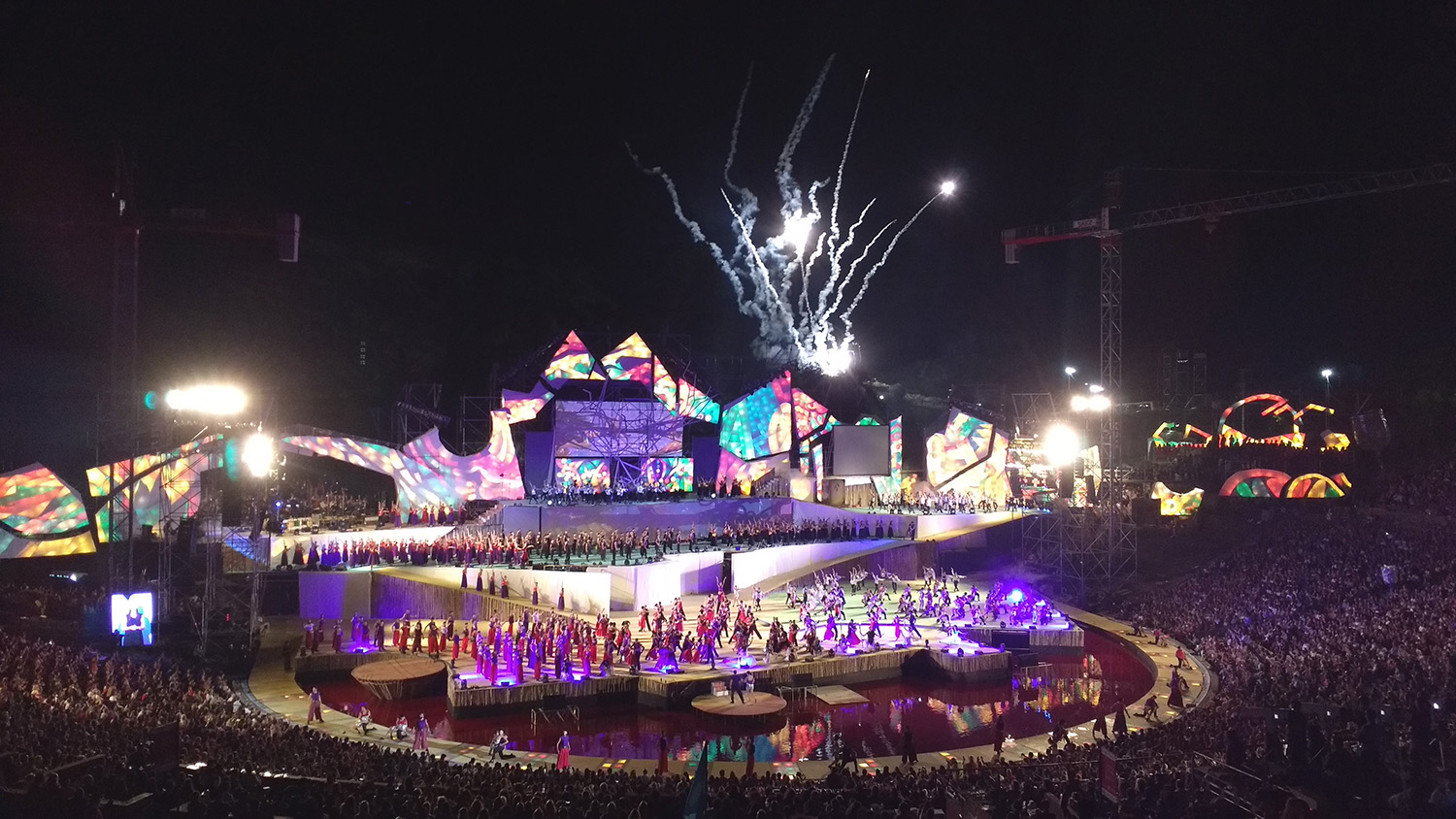
Maipo Valley, Chile
Overview
Maipo Valley, located just south of Santiago, is often considered the birthplace of Chilean wine, renowned for its exceptional Cabernet Sauvignon. This historic wine region, with sun-drenched vineyards set against the Andes Mountains, boasts a unique terroir that enhances the character of its wines. With winemaking traditions dating back to the 16th century, Maipo Valley benefits from a Mediterranean climate and mineral-rich soils, producing not only Cabernet Sauvignon but also outstanding Merlot, Syrah, and Carmenère. The region offers a blend of cultural and natural attractions, making it ideal for guided wine tours, gourmet dining, and outdoor activities. Its proximity to Santiago makes it a popular choice for day trips, providing an excellent introduction to Chilean winemaking amid stunning landscapes.
Popular Wineries
Concha y Toro
As one of the largest and most famous wineries in Latin America, Concha y Toro is renowned worldwide, especially for its iconic “Casillero del Diablo” label. The winery offers tours where visitors can explore its historic cellars, including the legendary Casillero del Diablo cellar, and learn about the winemaking process. Tastings often feature their premium lines, such as Don Melchor, an exceptional Cabernet Sauvignon. The estate also includes beautifully landscaped gardens and vineyards, providing a scenic setting.
Location: Find it here!
More Information: https://conchaytoro.com/
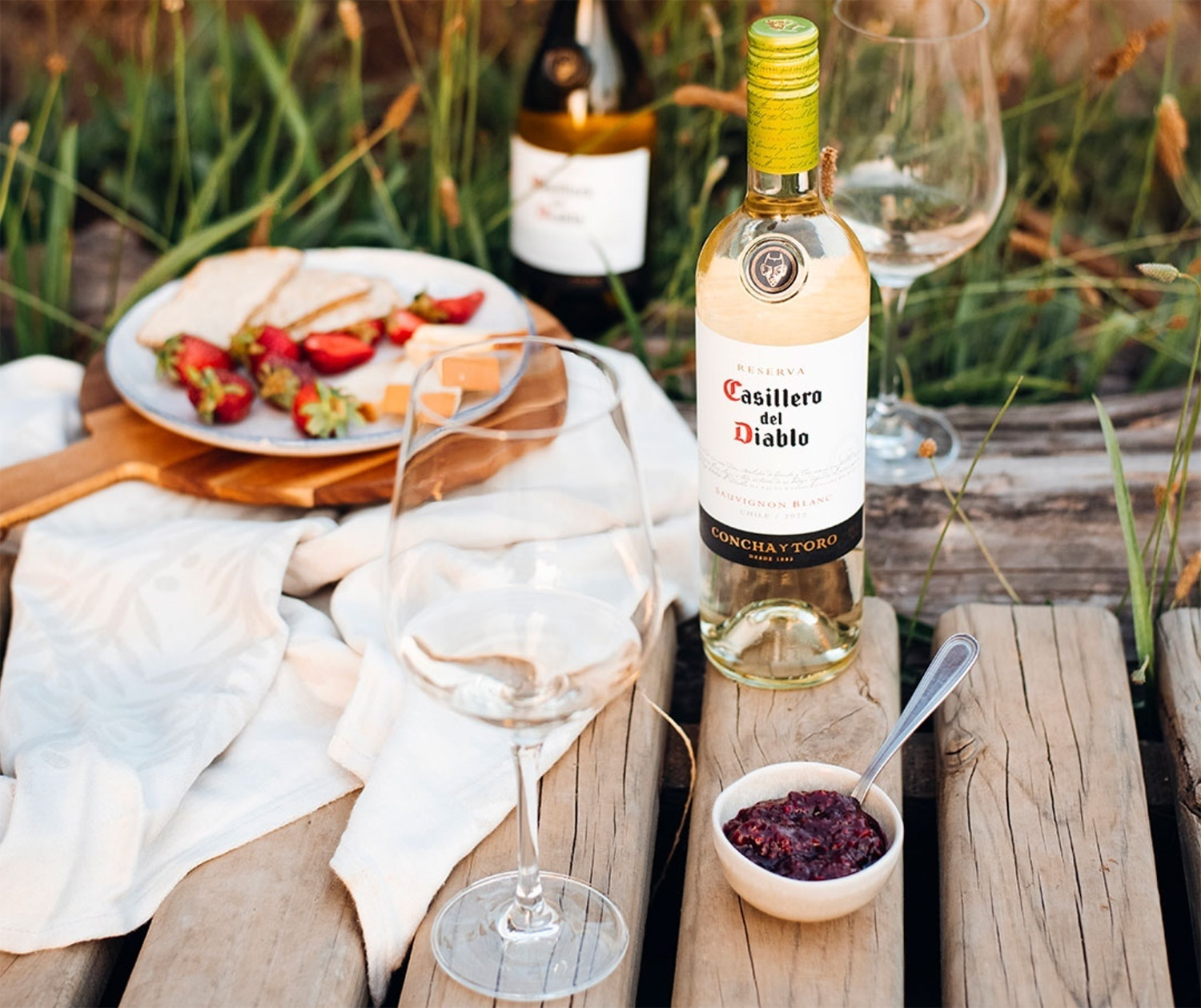
Viña Santa Rita
Founded in 1880, Santa Rita is a historic winery that combines winemaking excellence with cultural heritage. The estate is home to the Museo Andino, which showcases a collection of pre-Columbian art, and the stunning Casa Real Hotel, a national monument. Visitors can tour the historic vineyards and cellars, taste award-winning wines, and dine at the on-site restaurant, Doña Paula, which serves gourmet cuisine paired with Santa Rita’s wines. Santa Rita is especially famous for its 120 series and premium wines like Medalla Real.
Location: Find it here!
More Information: https://www.santarita.com/en/
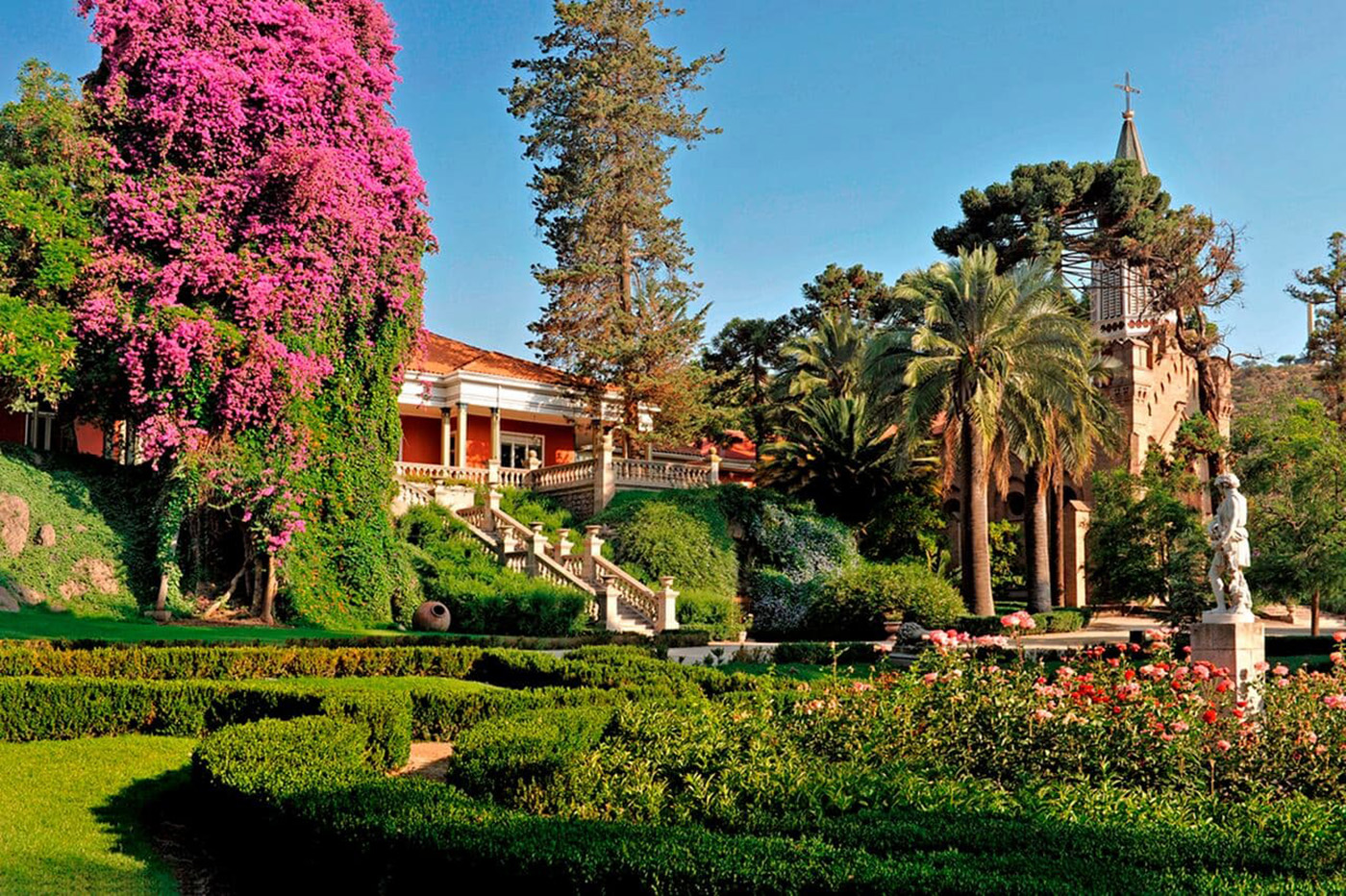
Undurraga
Viña Undurraga, founded in 1885 by Francisco Undurraga, is a historic winery in the Maipo Valley, Chile, known for its dedication to quality and innovation. The winery offers a diverse range of wines, focusing on premium reds like Cabernet Sauvignon, Carmenere, and Syrah, as well as whites like Sauvignon Blanc and Chardonnay, showcasing the region’s rich viticultural heritage. Visitors can enjoy guided tours of the vineyards and cellars, often including tastings of their award-winning wines. Committed to sustainability, Viña Undurraga implements eco-friendly practices in vineyard management. The winery also hosts cultural events throughout the year, making it a fantastic destination for anyone looking to experience the best of the Maipo Valley’s wine culture.
Location: Find it here!
More Information: https://undurraga.cl/en/home-2/
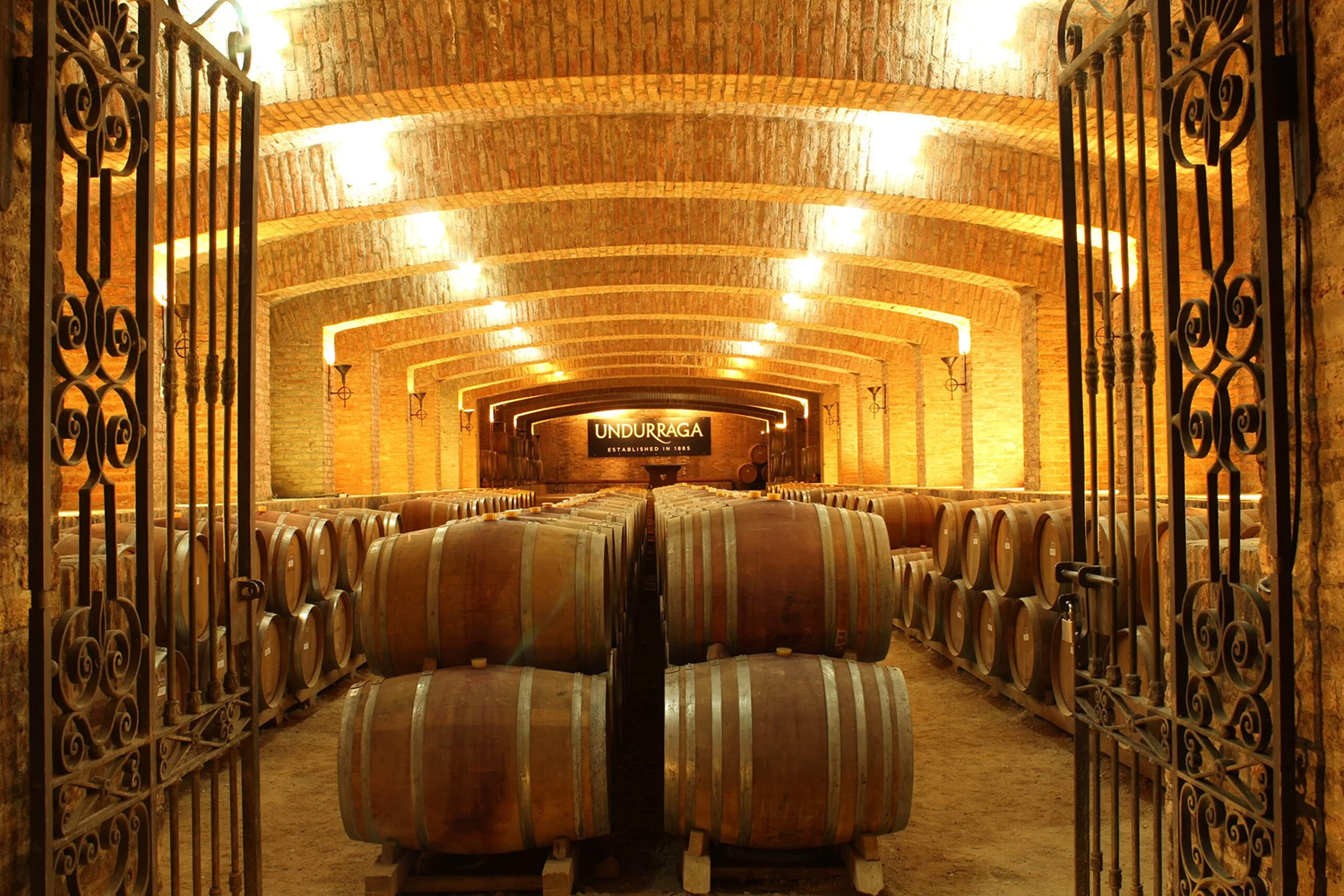
Festivals
Maipo Valley Grape Harvest Festival
The Maipo Valley Grape Harvest Festival, known as Fiesta de la Vendimia, is a vibrant celebration that typically takes place in March to mark the grape harvest season. This festival highlights the rich viticultural heritage of the Maipo Valley, one of Chile’s most renowned wine regions.
Key Features of the Festival:
- Wine Tastings: Visitors can sample an array of wines from various local wineries, experiencing the unique flavors and styles that the Maipo Valley has to offer.
- Gastronomic Delights: Alongside the wines, attendees can enjoy traditional Chilean cuisine, with many food stalls and restaurants offering gourmet dishes that pair perfectly with the wines.
- Cultural Performances: The festival features live music and dance performances, showcasing Chilean folklore and culture. It’s a lively atmosphere filled with joy and celebration.
- Workshops and Tours: Many wineries host special workshops where guests can learn about the winemaking process, vineyard management, and the different grape varieties grown in the region. Guided tours of the vineyards may also be available.
- Family-Friendly Activities: The festival often includes activities for families, such as grape stomping, art and craft stalls, and games for children, making it a fun outing for all ages.
The Maipo Valley Grape Harvest Festival is a fantastic opportunity for wine lovers and tourists to immerse themselves in Chile’s wine culture while enjoying the scenic beauty of the valley.
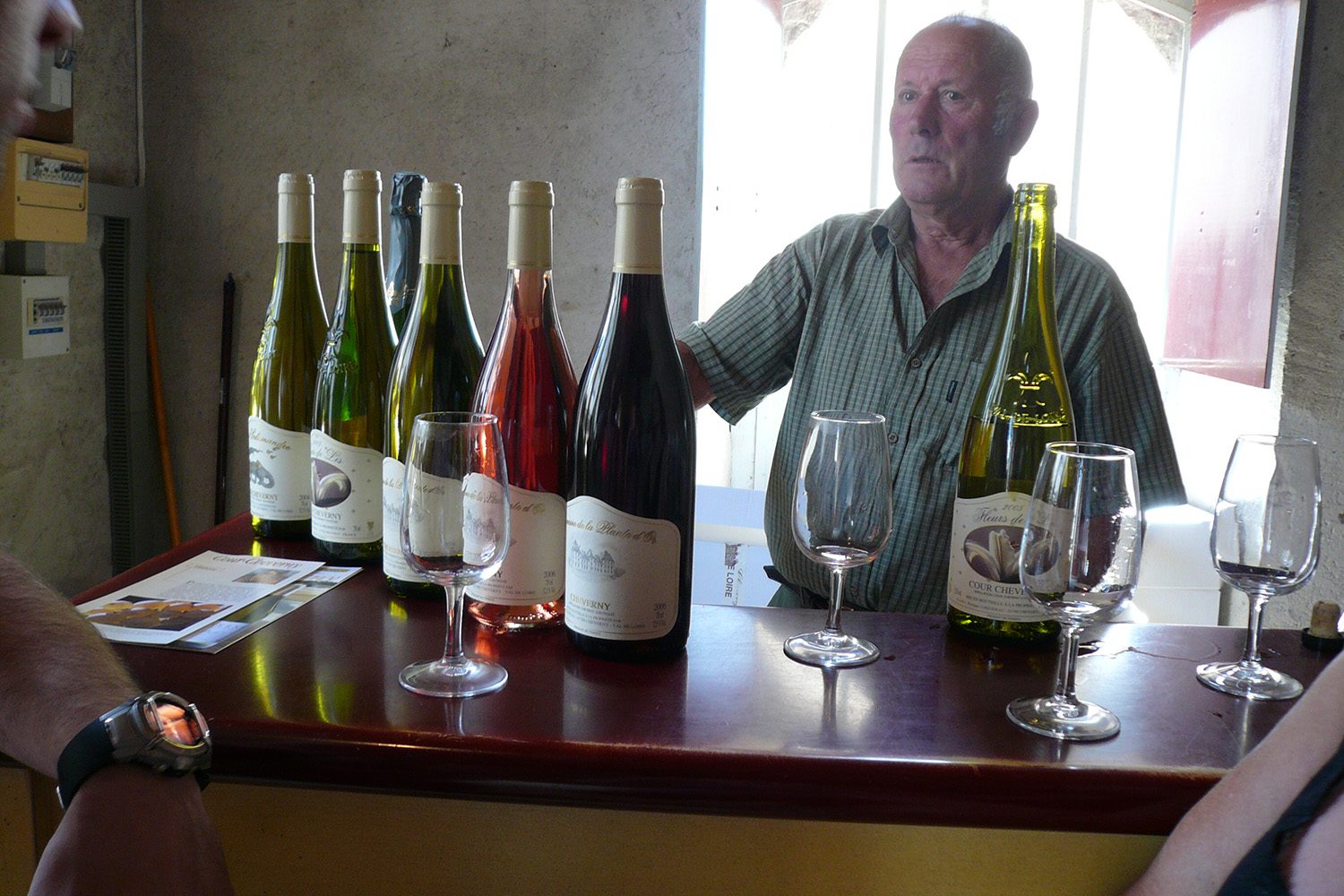
Montevideo, Uruguay
Overview
The Montevideo winelands offer a unique blend of traditional and modern wine culture in Uruguay’s capital region. Known for producing exceptional Tannat wines, Montevideo’s vineyards benefit from a coastal climate that provides ideal conditions for winemaking. The area is characterized by boutique wineries, charming tasting rooms, and rustic vineyards, where visitors can enjoy guided tours, sample local varieties, and learn about the history of winemaking in Uruguay. Exploring the Montevideo winelands offers not only exquisite wines but also picturesque landscapes that reflect the country’s rich agricultural heritage.
Popular Wineries
Bodega Bouza
Bodega Bouza is one of the most celebrated wineries in Uruguay, located just outside Montevideo. Known for its premium wines, especially Tannat and Albariño, Bodega Bouza offers a complete experience with guided tours of the vineyards and cellar, wine tastings, and a gourmet restaurant that pairs its dishes with wines produced on-site. The winery combines traditional winemaking techniques with modern technology, allowing visitors to explore the production process while enjoying the scenic surroundings. The charm of its historical architecture and classic car collection adds a unique touch to the wine experience.
Location: Find it here!
More Information: https://bodegabouza.com/
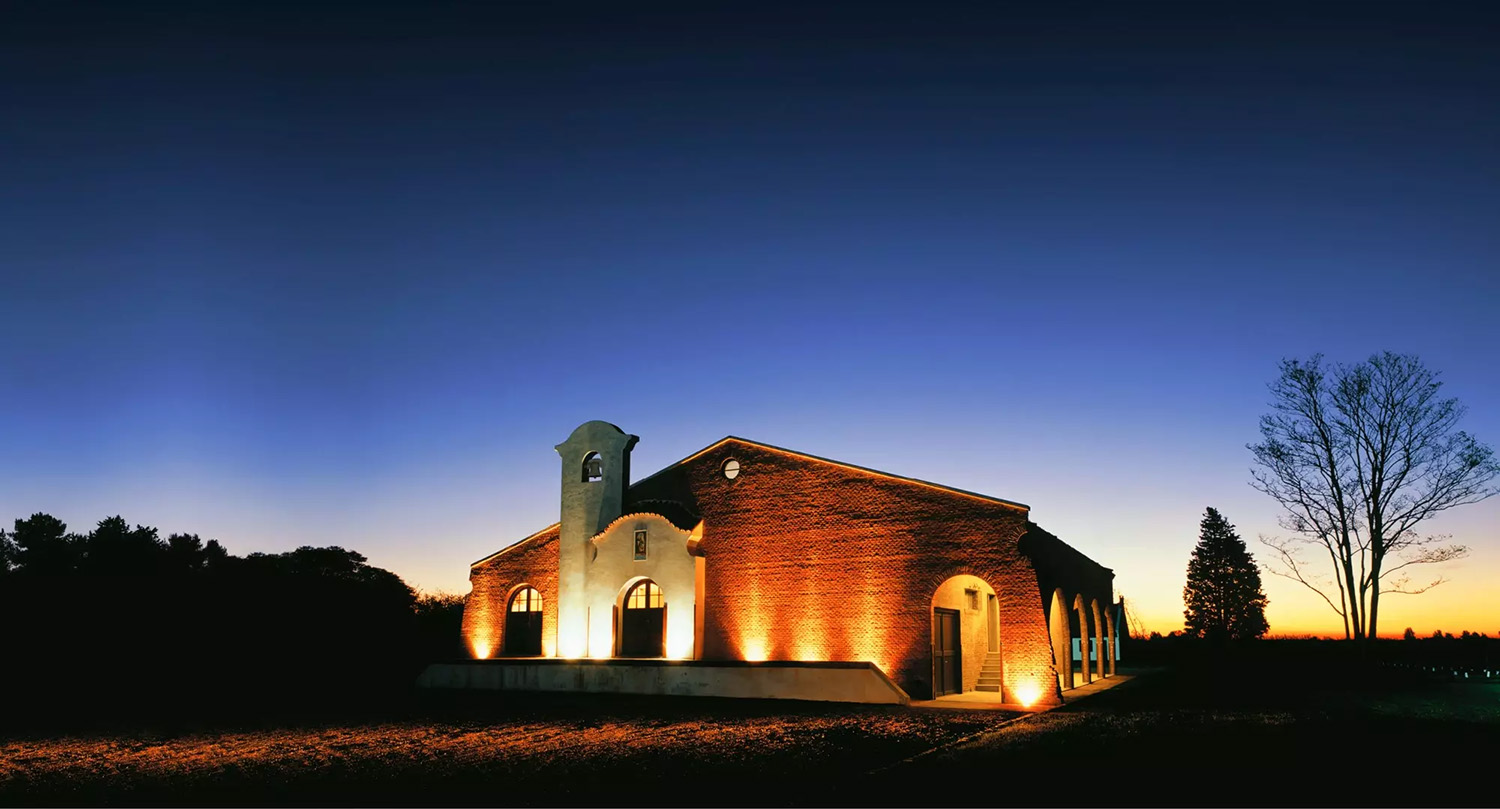
Pizzorno Family Estates
Pizzorno Family Estates is a historic winery located near Montevideo, known for its rich legacy in winemaking that dates back over a century. Specializing in Tannat, the estate produces a range of high-quality wines, including blends and sparkling varieties. Visitors can enjoy guided tours of the vineyards and cellars, participate in wine tastings, and savor Uruguayan cuisine paired with Pizzorno wines. The estate offers an intimate and authentic experience, showcasing the family’s dedication to preserving traditional methods while embracing innovation in winemaking.
Location: Find it here!
More Information: https://pizzornowines.com/
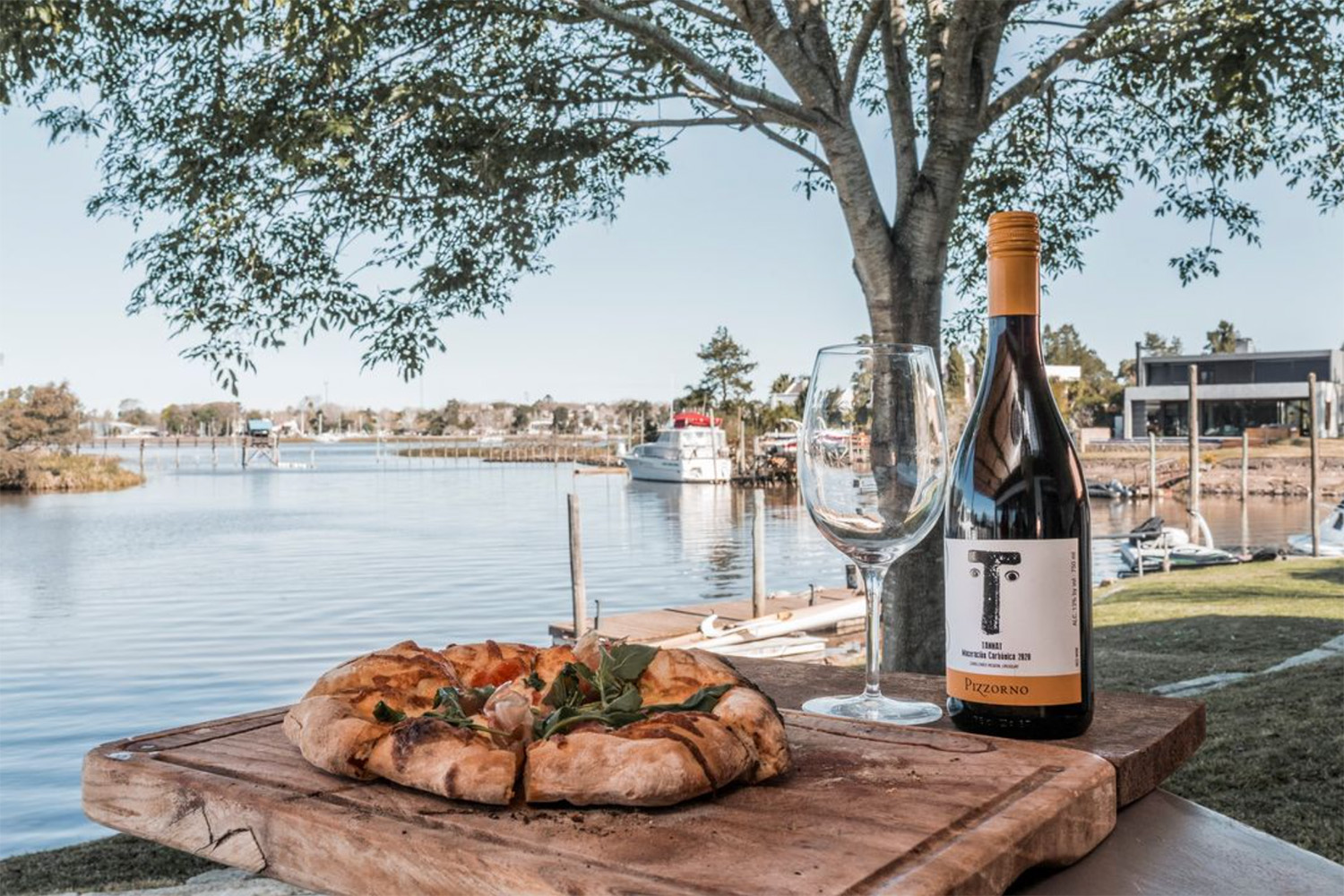
H. Stagnari
- Stagnari is a renowned winery located near Montevideo, celebrated for its award-winning wines, especially the Tannat varietal, which thrives in Uruguay’s unique terroir. The family-owned vineyard emphasizes traditional winemaking techniques while incorporating modern innovations to produce wines of exceptional quality. Visitors can explore the picturesque vineyards, tour the winemaking facilities, and enjoy tastings that highlight a variety of wines, from robust reds to crisp whites. The estate offers a warm, inviting atmosphere, where the passion for winemaking is evident in every glass.
Location: Find it here!
More Information: https://stagnari.com/
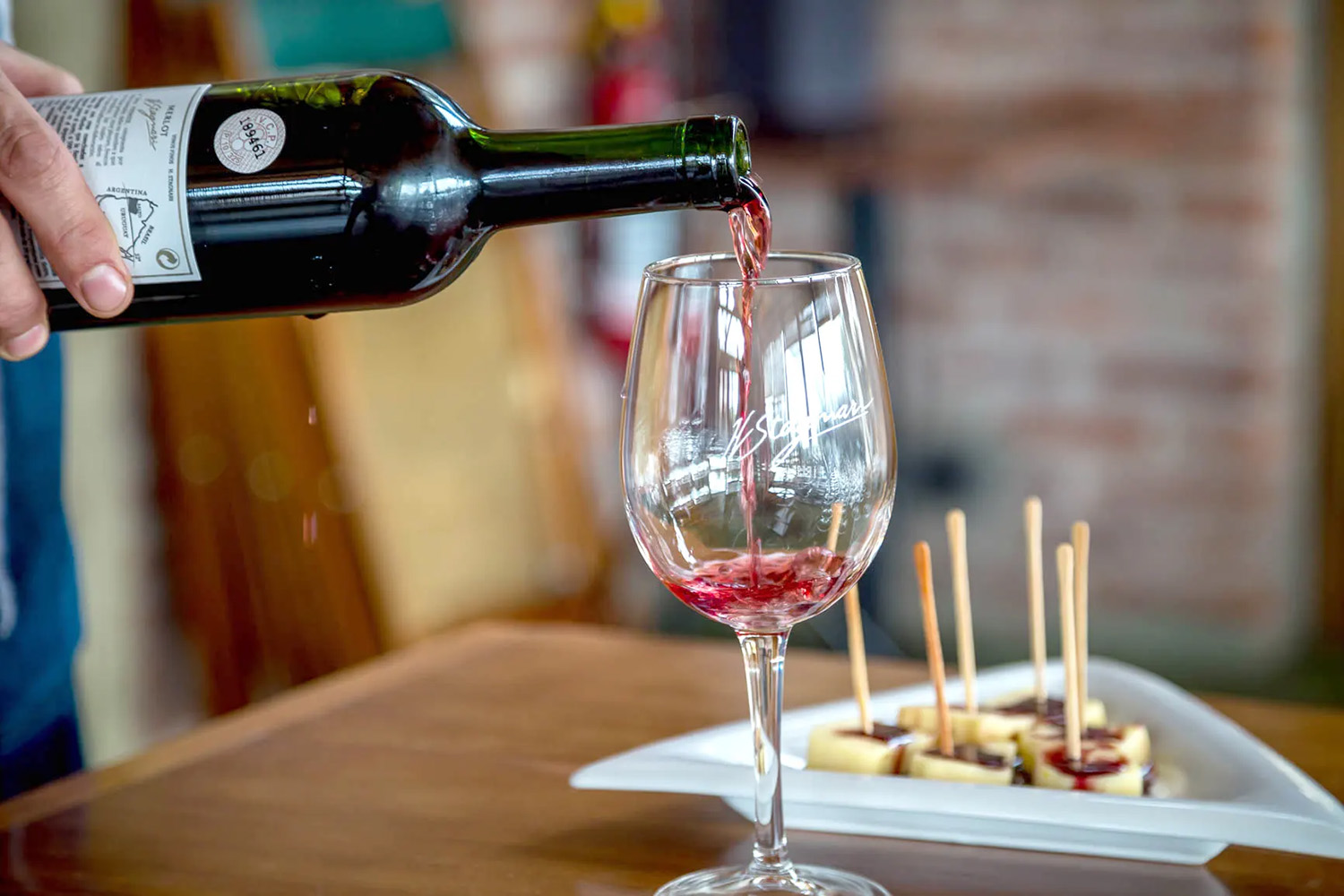
Castillo Viejo
Castillo Viejo is a charming winery situated in the picturesque countryside near Montevideo. Known for its unique castle-like architecture, this winery offers a delightful blend of history and winemaking tradition. Castillo Viejo specializes in a variety of wines, including the iconic Tannat, which is a signature grape of Uruguay, as well as elegant whites and robust reds. Visitors are invited to explore the scenic vineyards, enjoy guided tours that delve into the winemaking process, and partake in tastings that showcase the winery’s exceptional offerings. The inviting atmosphere and stunning views make it a perfect destination for wine lovers and those seeking a serene getaway.
Location: Find it here!
More Information: http://castilloviejo.com/
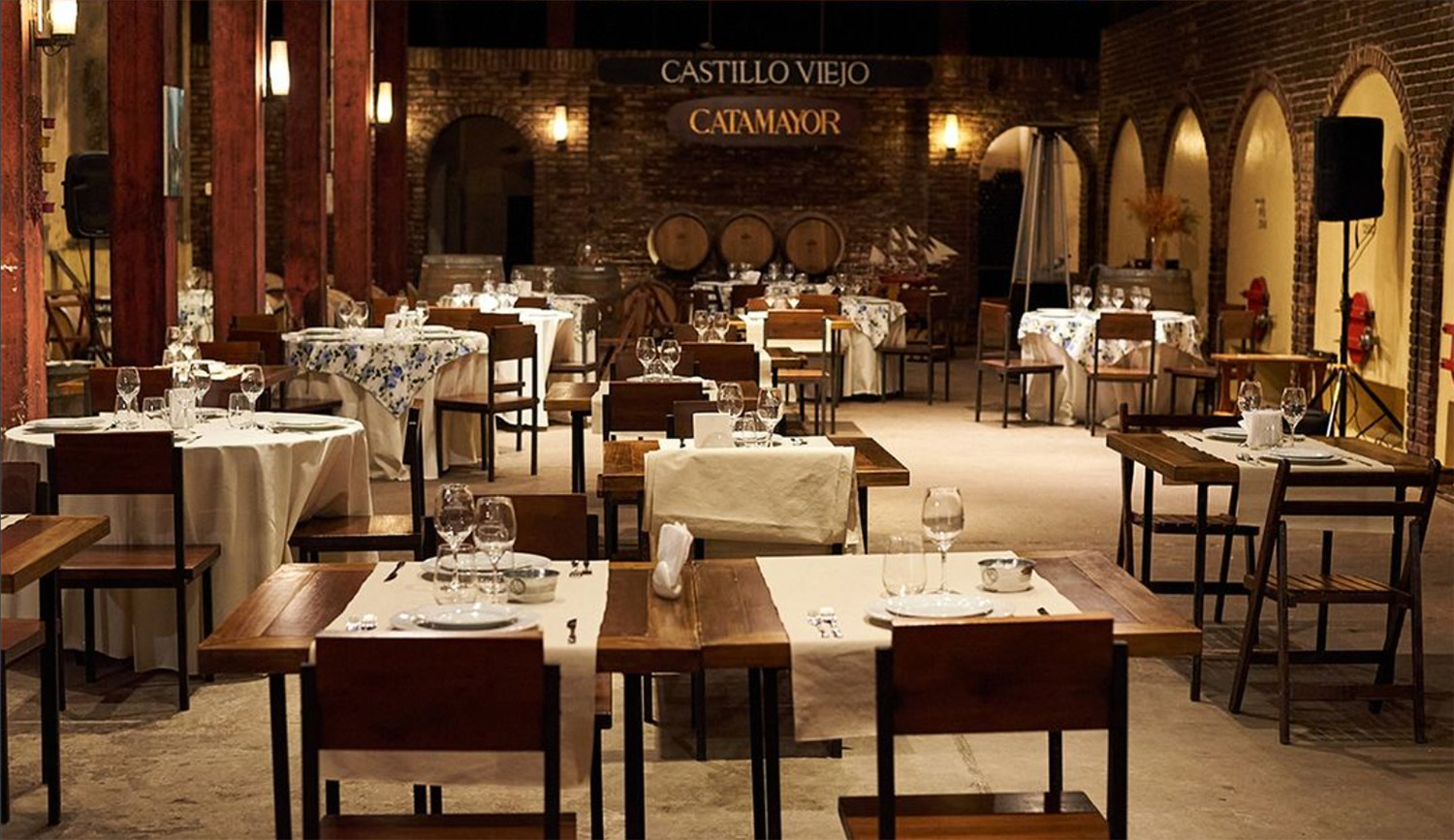
Festivals
Montevideo Grape Harvest Festival
The Montevideo Grape Harvest Festival, known as the Fiesta de la Vendimia de Montevideo, is a vibrant celebration of the region’s winemaking heritage and agricultural bounty. Held annually in late February or early March, the festival showcases Uruguay’s rich wine culture, particularly focusing on the popular Tannat grape variety.
Key Features of the Festival:
- Parades and Festivities: The festival kicks off with a lively parade featuring colorful floats, traditional music, and dancers dressed in costumes that reflect Uruguay’s cultural heritage. This parade is a highlight, drawing crowds of locals and tourists alike.
- Wine Tastings: Attendees have the opportunity to sample a diverse selection of wines produced by local vineyards. Tannat, known for its bold flavor and deep color, is prominently featured alongside other varietals that highlight the region’s winemaking prowess.
- Culinary Delights: The festival also emphasizes the culinary scene, with local chefs and restaurants offering delicious food pairings that complement the wines. Visitors can savor traditional Uruguayan dishes, such as asado (barbecue) and empanadas, while enjoying the wines.
- Cultural Performances: Throughout the event, various performances take place, including folk music, tango shows, and dance exhibitions. These cultural showcases provide insight into Uruguay’s rich artistic traditions and enhance the festive atmosphere.
- Artisan Market: A bustling market features local artisans selling crafts, handmade goods, and food products, allowing visitors to experience the region’s creativity and take home unique souvenirs.
- Closing Ceremony: The festival culminates in a grand closing ceremony that often includes a spectacular fireworks display and musical performances, celebrating the successful grape harvest and the community spirit of Montevideo.
The Montevideo Grape Harvest Festival is not just a celebration of wine; it’s a vibrant community event that brings together locals and visitors to enjoy the flavors, culture, and traditions of Uruguay, making it an essential experience for anyone traveling to the country.
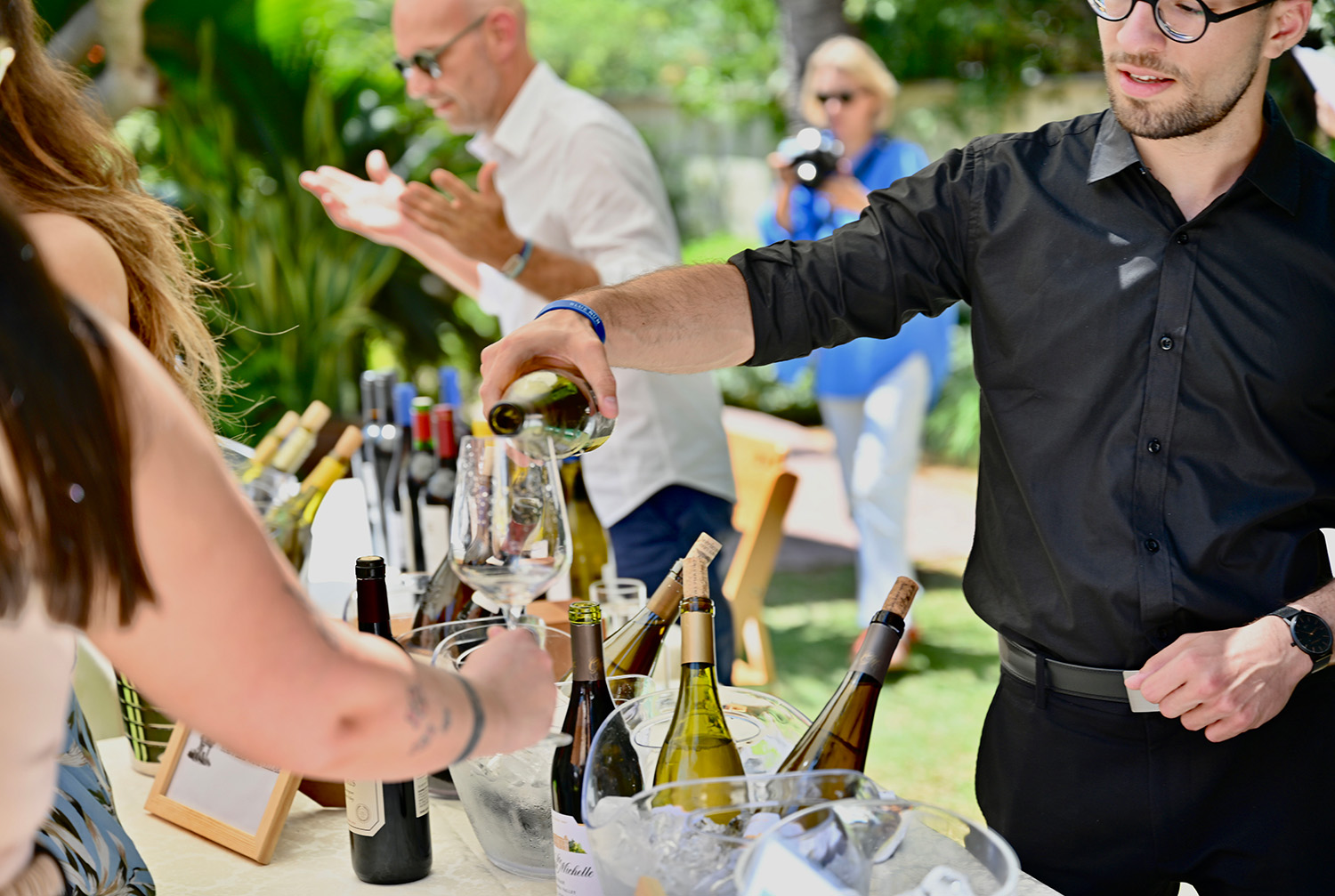
Degusto Montevideo
While not solely a wine festival, Degusto Montevideo is a well-known food and wine festival in Uruguay’s capital, offering a rich culinary experience that highlights the best of local cuisine and winemaking. Held in various scenic locations throughout the city, such as parks and open-air cultural spaces, it usually takes place in the autumn months, drawing food and wine enthusiasts from across the region.
Key Features:
- Local Wine Tastings: Degusto Montevideo emphasizes Uruguayan wines, with a particular focus on the country’s signature Tannat grape. Attendees can sample a variety of wines from different producers, experiencing the unique characteristics of local vintages.
- Gourmet Food Stalls: The festival showcases a diverse selection of Uruguayan cuisine, ranging from traditional dishes to contemporary culinary creations. Local chefs and food vendors present their specialties, giving visitors a taste of the country’s rich gastronomic culture.
- Pairing Experiences: The event features curated wine and food pairing sessions, where experts guide guests through the best combinations of local wines with regional flavors, enhancing the tasting experience.
- Live Entertainment: Degusto Montevideo includes live music and cultural performances that add to the festive atmosphere, featuring genres that span from traditional folk music to contemporary local bands.
- Workshops and Talks: The festival often hosts educational sessions on wine appreciation, food preparation, and the art of pairing, led by sommeliers, chefs, and industry experts, offering a deeper understanding of Uruguay’s culinary and winemaking traditions.
Degusto Montevideo provides a delightful experience for both locals and visitors, offering a taste of the city’s vibrant food scene and a chance to discover Uruguay’s evolving wine culture.
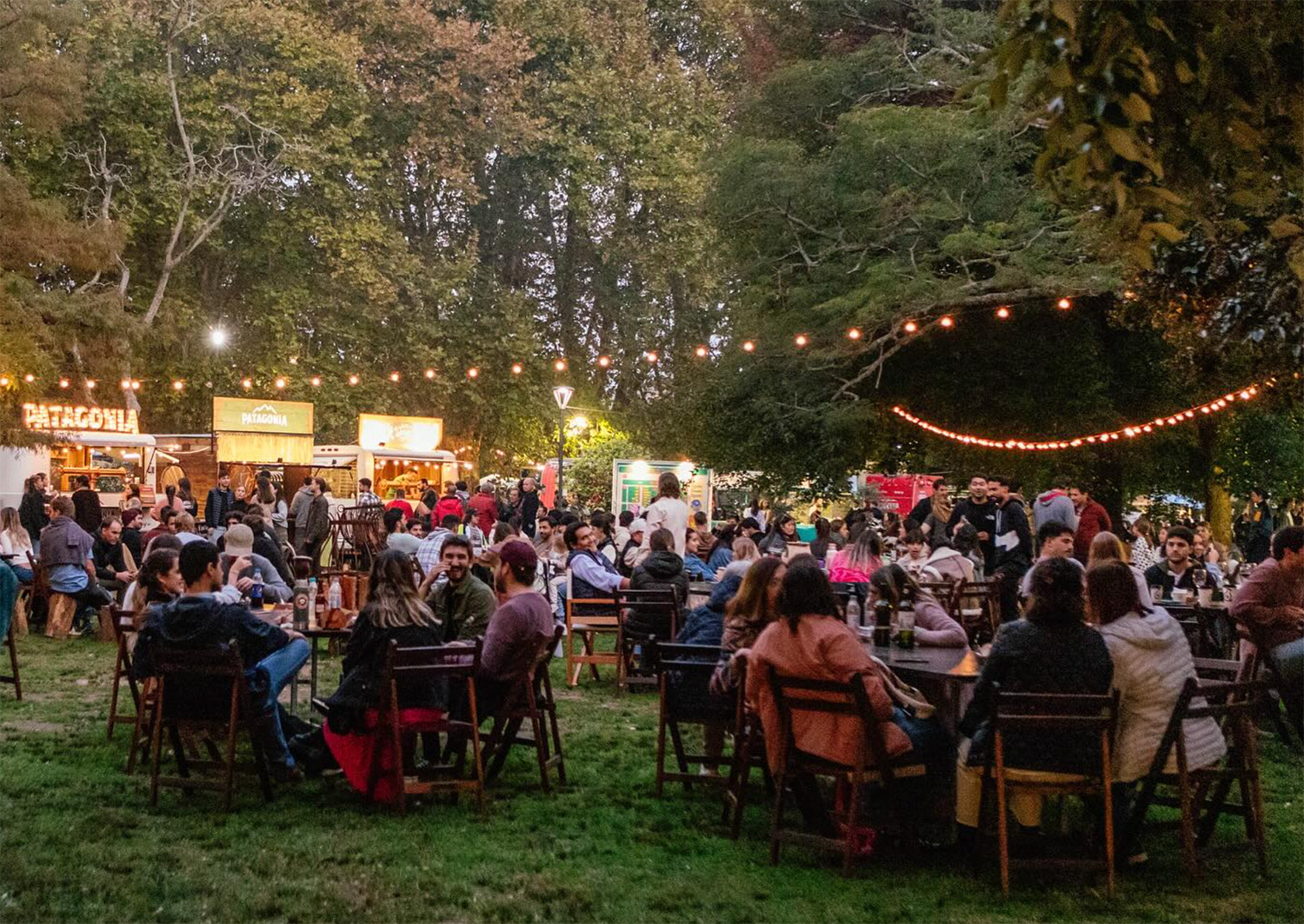
Tannat and Lamb Festival (Festival del Tannat y el Cordero)
The Tannat and Lamb Festival is a celebrated annual event in Uruguay that showcases the country’s signature wine, Tannat, alongside its renowned lamb dishes. It is typically held in the autumn, during the grape harvest season, and offers a delightful opportunity for visitors to indulge in the flavors of Uruguayan cuisine and wine in a lively, festive setting.
Key Features:
- Tannat Wine Tastings: The festival highlights Uruguay’s flagship wine, Tannat, allowing guests to sample a variety of styles from different wineries. Wine producers from across the country present their best Tannat vintages, showcasing the bold and rich flavors that the grape variety is known for.
- Traditional Lamb Dishes: The festival pairs the robust Tannat wines with an array of traditional lamb dishes. Local chefs and food vendors prepare mouthwatering specialties such as lamb grilled on an open fire (asado), lamb stews, and other regional recipes that emphasize the quality and flavor of Uruguayan lamb.
- Wine and Food Pairing Sessions: Guided pairing sessions are a highlight, where experts suggest the best Tannat wines to complement various lamb dishes. This interactive experience allows guests to learn about the art of pairing and enhances the tasting journey.
- Cultural and Folk Performances: The festival celebrates Uruguayan culture with live music, dance, and folk performances that entertain attendees throughout the event. The performances often include traditional candombe drumming, tango, and folk dances that enrich the cultural atmosphere.
- Cooking Demonstrations and Workshops: The event frequently features cooking demonstrations by local chefs, who share their techniques and secrets for preparing lamb dishes. Workshops on wine tasting, understanding Tannat’s characteristics, and wine production are also common.
- Family-Friendly Activities: While the main focus is on wine and lamb, the festival also offers family-friendly attractions such as games, arts and crafts, and activities for children, making it a well-rounded experience for all ages.
The Tannat and Lamb Festival offers a unique taste of Uruguayan culture, combining the country’s winemaking heritage with its culinary traditions in a lively celebration of flavor and tradition.
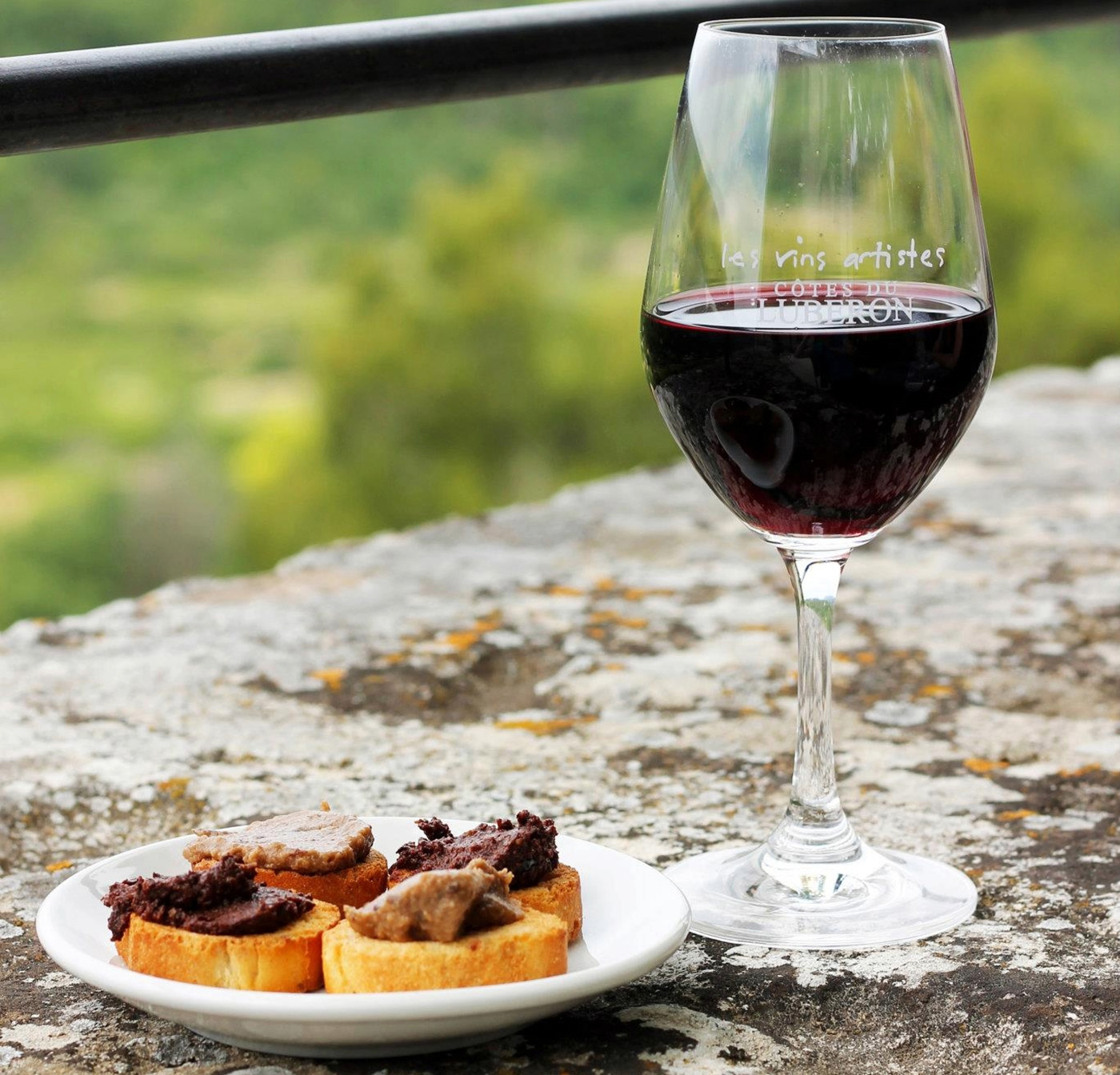
Wine Culture and Traditions Across South America
South America’s wine culture is steeped in history and deeply intertwined with the continent’s traditions, climate, and cuisine. From the high-altitude vineyards in the Andes to the lush valleys of Uruguay, each region contributes its unique character to the diverse tapestry of South American wine. Here’s a look at how wine culture and traditions manifest across the continent:
Argentina – The Malbec Legacy
Argentina, especially Mendoza, is synonymous with Malbec, a grape that has become a symbol of the country’s wine identity. The tradition of enjoying Malbec alongside Argentina’s famous asado (barbecue) is deeply rooted in the culture. During the annual Grape Harvest Festival (Vendimia), the country’s wine regions celebrate with parades, traditional dances, and grape blessings, embodying Argentina’s passion for winemaking.
Chile – Crafting Wines in the Valleys
In Chile, wine culture thrives in valleys like Maipo and Colchagua, where ideal conditions allow for world-class Cabernet Sauvignon and Carménère production. The country’s winemaking tradition dates back to the 16th century, and Chilean wine festivals are a staple, featuring folk music, traditional dance, and food pairing events that highlight local cuisine. The celebration of the grape harvest, known as “La Fiesta de la Vendimia,” is a key event that brings communities together to honor the winemaking heritage.
Uruguay – The Rise of Tannat
Uruguay may be smaller in scale, but it is no less passionate about wine. The country’s flagship grape, Tannat, is known for its bold flavor and has become central to Uruguayan wine culture. Wine festivals, such as the Tannat and Lamb Festival, celebrate this signature varietal and pair it with traditional dishes like roasted lamb. Uruguay’s vineyards, often near the Atlantic coast, offer a unique terroir that enhances the distinctive characteristics of its wines.
Wine Rituals and Culinary Pairings
Across the continent, wine is not only a beverage but a part of cultural rituals. In Argentina and Uruguay, it’s common to drink wine with family meals, while in Chile, winemaking traditions are tied to ancient techniques and innovations. Wine pairings with local cuisine, such as empanadas, grilled meats, and seafood, reflect the diverse culinary influences found in each region.
The Influence of Terroir and Tradition
The diverse climates and geographies of South America shape each country’s winemaking traditions. The Andes provide irrigation for Argentina and Chile’s vineyards, while Uruguay’s coastal breezes contribute to Tannat’s unique profile. The influence of terroir is complemented by centuries-old winemaking techniques passed down through generations, blending Old World practices with New World innovation.
South America’s wine culture is a celebration of history, tradition, and regional diversity. Whether you’re sampling a robust Malbec in Mendoza, a smooth Carménère in Maipo, or a bold Tannat in Montevideo, the continent offers a rich and immersive wine experience that reflects its unique spirit and traditions.
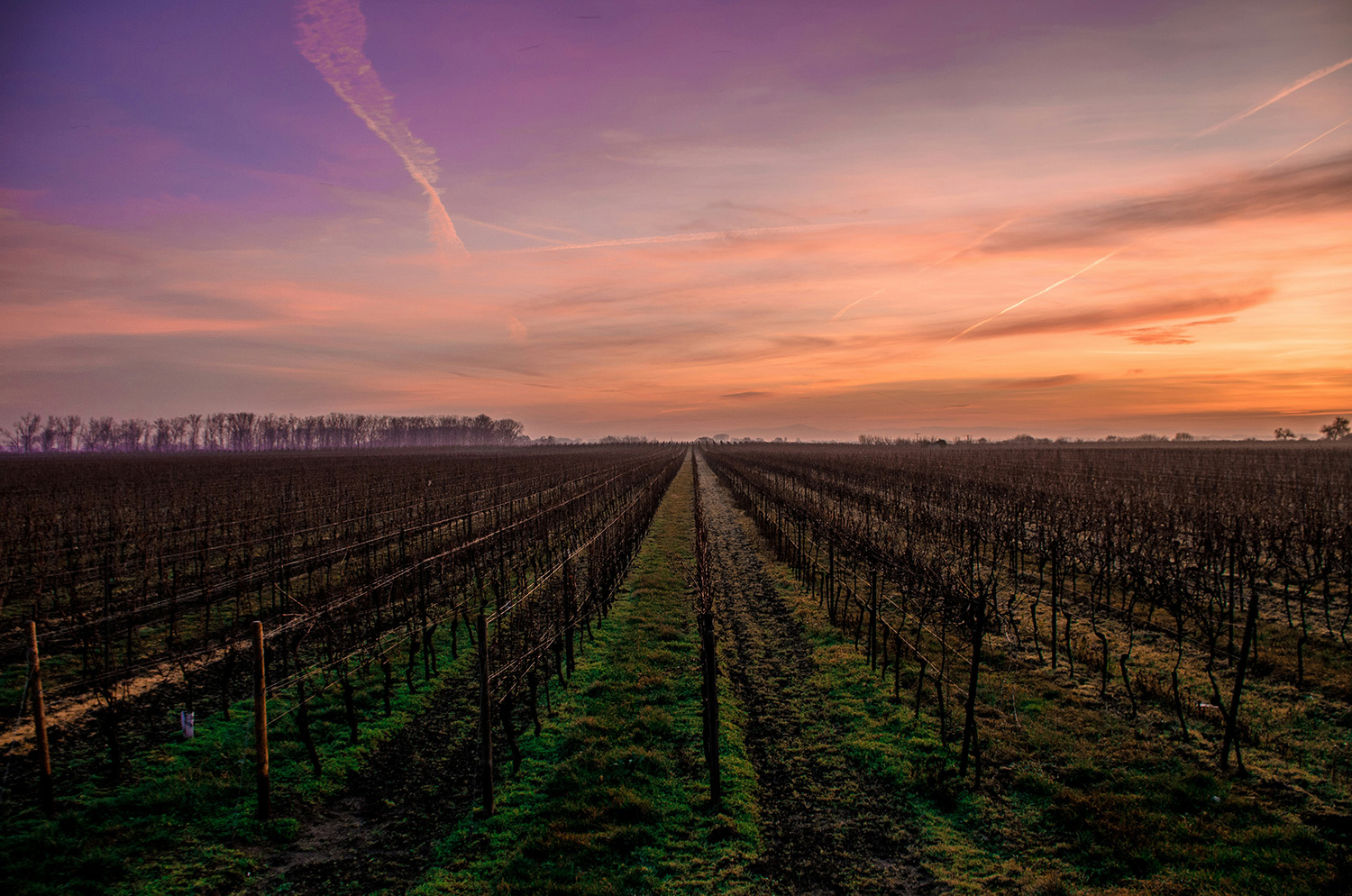
Pairing South American Wines with Local Cuisine
South American cuisine is as diverse as its landscapes, with each country offering unique flavors and ingredients that beautifully complement the region’s wines. Here’s a guide on how to pair some of the finest South American wines with local dishes to enhance your dining experience:
Argentina
- Malbec with Asado
Argentina’s iconic barbecue, asado, features various cuts of beef cooked over an open flame. The bold flavors of grilled meats pair perfectly with Malbec, whose dark fruit and tannins enhance the richness of the meat.
- Torrontés with Empanadas
This aromatic white wine matches well with empanadas filled with cheese, chicken, or beef. The wine’s floral notes complement the savory filling, creating a refreshing balance.
- Bonarda with Milanesa
A breaded and fried meat cutlet, Milanesa pairs nicely with Bonarda, whose juicy, red fruit flavors enhance the dish’s crispy texture.
Chile
- Carménère with Pastel de Choclo (corn pie)
This Chilean corn pie combines ground meat, chicken, and a sweet corn topping. The herbal and spicy notes of Carménère harmonize beautifully with the richness of the dish.
- Sauvignon Blanc with Ceviche
Chile’s fresh ceviche, typically made with white fish marinated in citrus, pairs excellently with a crisp Sauvignon Blanc. The wine’s acidity complements the dish’s brightness, enhancing its zesty flavors.
- Syrah with Charcoal-Grilled Meats
Charcoal-grilled meats, such as those found in Chilean parrilladas, are a great match for Syrah. The wine’s bold flavor profile and peppery finish enhance the smoky char of grilled meats.
Uruguay
- Tannat with Roasted Lamb
Uruguay’s signature grape shines alongside roasted lamb. The wine’s bold tannins and dark fruit flavors complement the rich, fatty nature of the lamb, creating a hearty pairing.
- Albariño with Seafood
The coastal cuisine of Uruguay features various seafood dishes, from grilled fish to shellfish. Albariño, with its bright acidity and citrus notes, pairs well with these light, fresh flavors.
- Merlot with Pasta with Meat Sauce
Rich, tomato-based meat sauces served with pasta are a comforting dish that pairs wonderfully with Merlot. The wine’s smooth tannins and fruitiness complement the dish’s savory elements.
Tips for Pairing
- Consider Flavor Intensity: Match lighter wines with lighter dishes and heavier wines with richer dishes.
- Highlight Regional Ingredients: Use local ingredients in your dishes to create an authentic pairing experience.
- Experiment with Balance: Balance the flavors in your food and wine. For example, sweet wines can counteract spicy dishes, while acidic wines can cut through creamy sauces.
By thoughtfully pairing South American wines with local cuisine, you can elevate your dining experience, enjoying the rich flavors and traditions that each region has to offer. Whether savoring a Malbec with asado in Argentina or sipping Albariño with seafood in Uruguay, each pairing tells a story of the land, culture, and passion for wine.
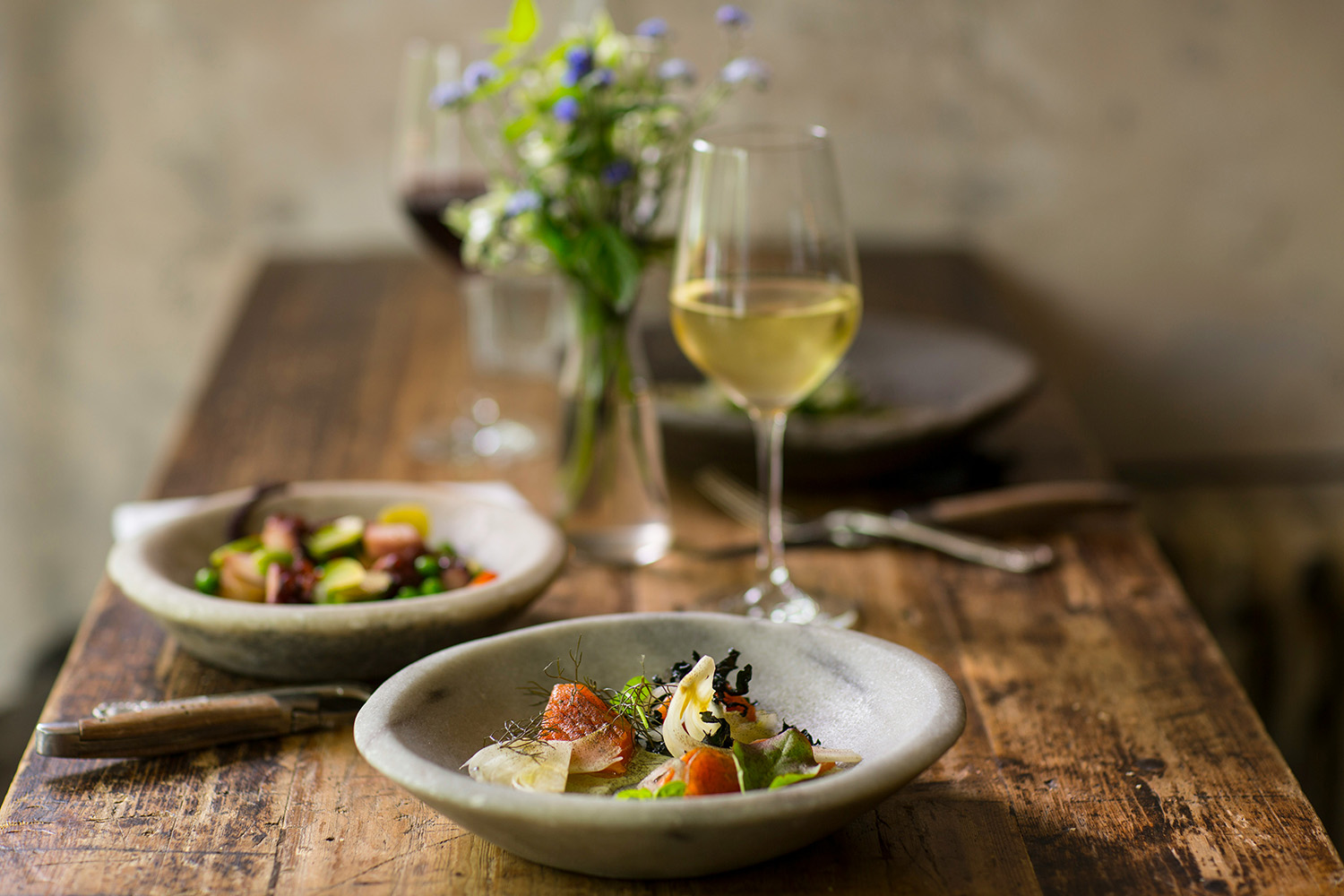
Unique Wine-Tasting Experiences to Try
Exploring South America’s wine scene offers much more than traditional vineyard tours and tastings. The wine regions in Argentina, Chile, and Uruguay are rich with unique experiences that allow visitors to dive deeper into the culture, history, and artistry of winemaking. Here are some one-of-a-kind wine-tasting experiences you shouldn’t miss:
Argentina
- Harvest Your Own Grapes in Mendoza
Participate in the winemaking process during the grape harvest season (March to April). Several wineries in Mendoza invite visitors to join in the grape-picking festivities, giving them a hands-on experience of the first step in the winemaking process. Guests can follow this with a private tasting of fresh vintages while learning about the evolution of the wines.
- Horseback Vineyard Tours in Uco Valley
Swap the traditional walking tour for a horseback ride through the scenic vineyards of Uco Valley. Enjoy sweeping views of the Andes while riding among the vines, followed by a rustic picnic featuring local wines, cheeses, and charcuterie.
- Wine Spa Treatments in Luján de Cuyo
For a truly unique indulgence, some wineries offer wine-based spa treatments. Relax with vinotherapy massages, grape seed scrubs, or wine-infused baths that use the antioxidant-rich properties of grapes to rejuvenate your skin. End the experience with a glass of premium Malbec.
Chile
- Bike Tours in the Casablanca and Colchagua Valleys
Explore Chile’s renowned wine regions by bike, cycling through rolling vineyards in Casablanca or Colchagua Valley. Stop at various wineries along the way to sample their signature Sauvignon Blanc or Carménère, paired with local delicacies. This active approach provides a scenic way to appreciate the region’s landscapes and wines.
- Barrel Room Tastings in Maipo Valley
Experience the depth of Chilean wines by tasting straight from the barrel at some of Maipo Valley’s historic wineries. Barrel tastings allow visitors to compare wines at different aging stages, learning about the impact of oak, time, and blending techniques. This behind-the-scenes glimpse into winemaking is perfect for enthusiasts looking to expand their knowledge.
- Starlit Wine Tastings in Elqui Valley
Enjoy a celestial wine experience in Elqui Valley, known for its clear skies and astronomical observatories. Several wineries offer night-time tastings where visitors can sample wines under the stars, paired with guided stargazing sessions. It’s a magical combination of wine and astronomy, creating an unforgettable experience.
Uruguay
- Tannat Tastings on the Beach in Punta del Este
Uruguay’s signature grape, Tannat, can be enjoyed in a variety of settings, but tasting it on the beach adds a distinct twist. Some local wine producers host beachside tastings in Punta del Este, where guests can sip Tannat while feeling the sea breeze and listening to the sound of the waves.
- Family-Owned Vineyard Tours near Montevideo
Discover the personal touch of Uruguay’s boutique, family-owned wineries located near Montevideo. Meet the winemakers, walk through the small vineyards, and hear stories passed down through generations. These intimate tours often include homemade dishes paired with wines, offering a deep dive into Uruguay’s culinary traditions.
- Blend Your Own Wine at a Winery in Canelones
Put your creativity to the test by blending your own wine. Several wineries in the Canelones region offer workshops where visitors can mix different grape varieties to create a personalized bottle. This hands-on experience not only teaches the art of blending but also allows you to take home a unique souvenir.
Tips for Wine Tasting in South America
- Plan Ahead: Many of these unique experiences require advance reservations.
- Dress Appropriately: For outdoor or vineyard activities, wear comfortable shoes and consider bringing a hat and sunscreen.
- Try Local Pairings: Enhance your tastings by pairing wines with local cuisine such as asado in Argentina, seafood in Chile, or lamb dishes in Uruguay.
These distinctive wine-tasting experiences across Argentina, Chile, and Uruguay go beyond traditional tastings, offering visitors immersive and memorable ways to explore South America’s wine culture. From starlit sips in Chile to grape harvesting in Argentina, each activity is a journey into the heart and soul of the region’s winemaking traditions.
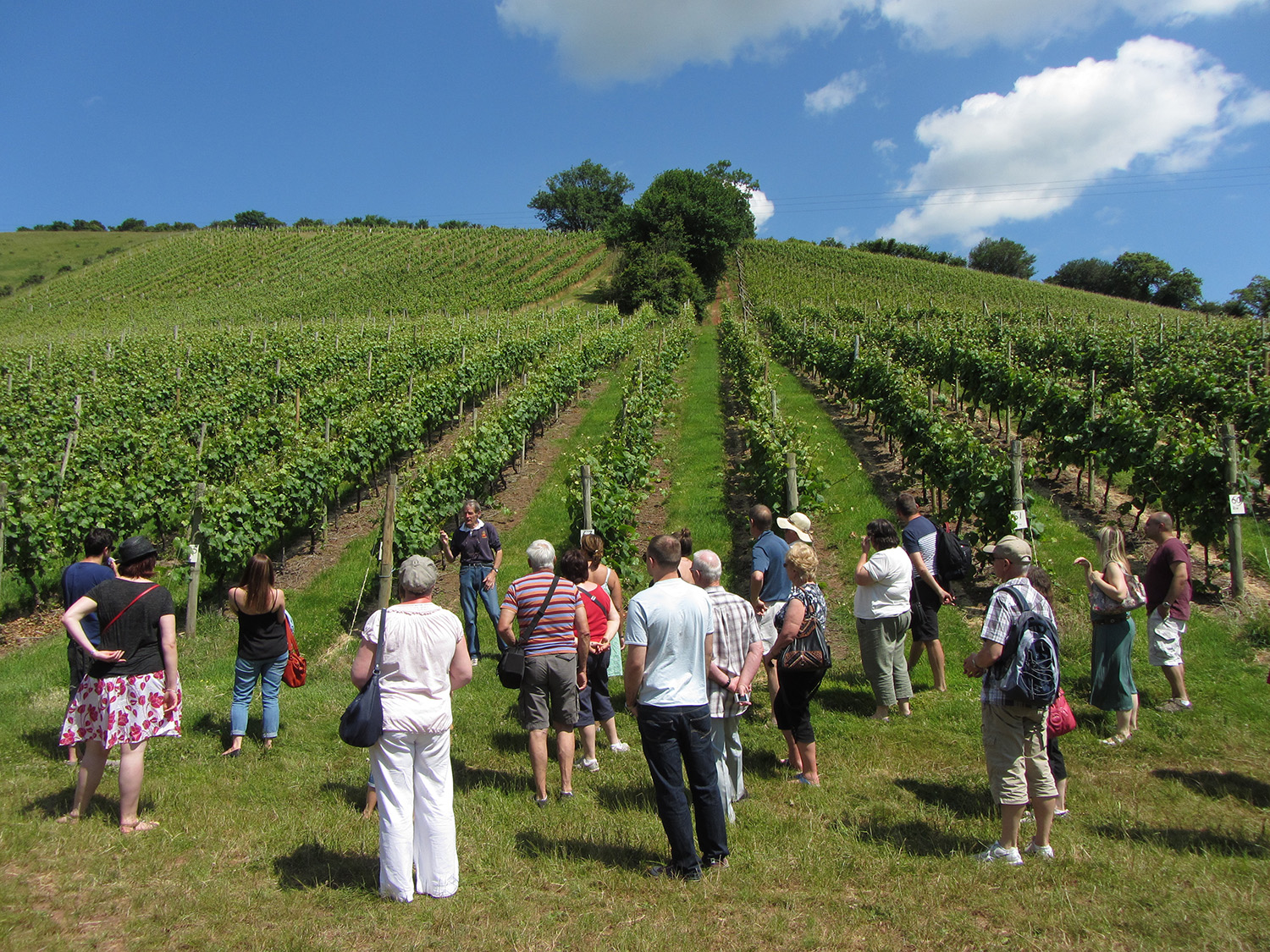
The Best Times to Visit South America’s Wine Regions
Timing your visit to South America’s renowned wine regions can significantly enhance your experience, whether you’re hoping to catch the grape harvest, enjoy warm weather, or attend local festivals. Here’s a guide to the best times for exploring the wine regions of Argentina, Chile, and Uruguay.
Argentina: Mendoza and Uco Valley
- Best Time: March to May (Fall/Harvest Season)
Fall is an ideal time to visit Mendoza and Uco Valley, coinciding with the grape harvest. The region comes alive with vibrant colors, and wineries are bustling with activity. This is the perfect time to participate in grape picking, attend the famous Mendoza Grape Harvest Festival (Vendimia), and enjoy wine tastings of freshly harvested vintages.
- Alternative Time: November to February (Spring/Early Summer)
If you prefer warm weather without the crowds, spring and early summer offer pleasant temperatures and lush vineyard landscapes. Many wineries also host outdoor events, making it a great time for biking tours and picnics among the vines.
Chile: Maipo, Casablanca, and Colchagua Valleys
- Best Time: March to May (Fall/Harvest Season)
Like Argentina, Chile’s wine regions thrive during the fall harvest. The wine valleys of Maipo, Casablanca, and Colchagua host numerous grape harvest festivals and special events. It’s an excellent time to explore wineries, enjoy barrel tastings, and savor freshly pressed wines.
- Alternative Time: September to November (Spring)
Spring in Chile offers milder weather and blossoming vineyards, creating a picturesque backdrop for vineyard tours. It’s also the time for spring celebrations and wine releases, allowing you to sample new vintages.
Uruguay: Montevideo and Canelones
- Best Time: February to April (Late Summer/Fall)
Uruguay’s wine regions, including Canelones and Montevideo, celebrate the grape harvest from late February to April. This period sees numerous festivals dedicated to Tannat, Uruguay’s flagship grape, including beachside tastings and the Tannat and Lamb Festival. It’s the best time to experience the country’s winemaking traditions and lively wine culture.
- Alternative Time: October to December (Spring)
Spring offers pleasant temperatures and fewer tourists. Vineyards are lush and green, making it a great time for winery visits and outdoor wine tastings. This season provides an opportunity to enjoy the local countryside while sampling Uruguay’s evolving wine offerings.
Key Considerations
- Harvest Season: March to May is the peak time for wine enthusiasts, with grape harvest festivals and winery events taking place across the region. This season provides the best opportunity to immerse yourself in the winemaking process.
- Climate: South America’s southern hemisphere location means that seasons are opposite to those in the northern hemisphere. Summers (December to February) can be hot, while winters (June to August) can be chilly, especially in higher altitudes.
- Festival Timings: Plan your visit around wine festivals such as Mendoza’s Vendimia, Chile’s Maipo Valley Grape Harvest Festival, or Uruguay’s Tannat and Lamb Festival to experience local wine culture to its fullest.
Summary
For the most immersive wine experiences, plan your visit during the harvest months of March to May, when you can witness the full vibrancy of South America’s wine regions. Whether you’re grape-picking in Mendoza, enjoying barrel tastings in Chile, or sipping Tannat on a Uruguayan beach, timing your trip can make all the difference in creating an unforgettable wine journey.
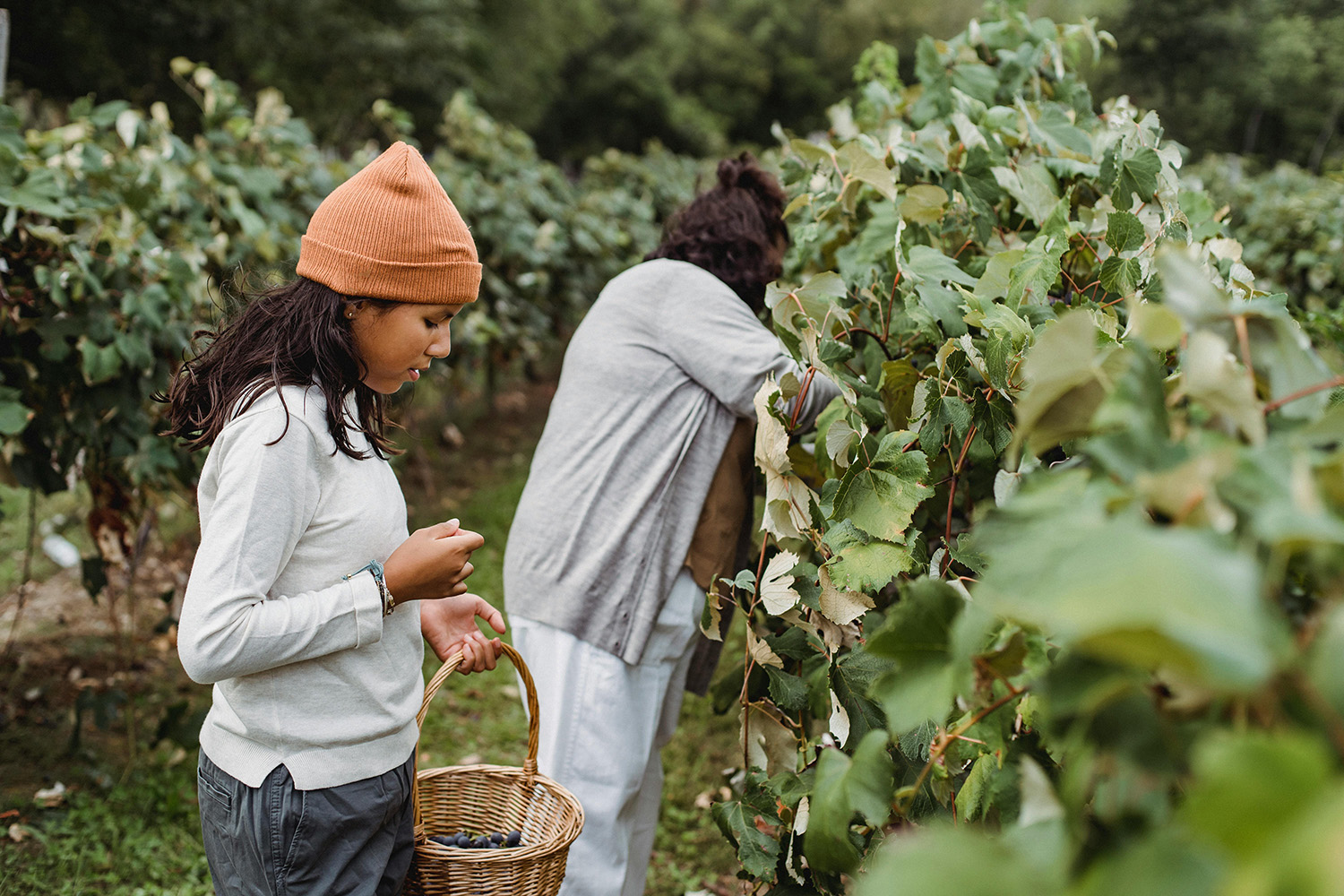
Sustainability in South American Wineries
South American wineries are increasingly adopting sustainable practices, focusing on reducing environmental impact, enhancing social responsibility, and preserving cultural heritage. Here’s a look at the key sustainability efforts in Argentina, Chile, and Uruguay’s wine industries.
Organic and Biodynamic Farming
Many wineries in South America have shifted towards organic and biodynamic viticulture, reducing or eliminating the use of synthetic chemicals in the vineyard.
- Argentina: Wineries in Mendoza and Uco Valley, such as Domaine Bousquet, are leading the way with certified organic and biodynamic practices. They use natural compost, biological pest controls, and lunar calendar cycles to guide vineyard management.
- Chile: The Colchagua and Casablanca Valleys have seen a surge in organic farming, with wineries like Emiliana embracing biodynamic principles. This approach emphasizes soil health and ecosystem diversity, promoting long-term sustainability.
- Uruguay: Bodega Narbona is among Uruguay’s wineries incorporating organic methods, with a focus on maintaining soil fertility and reducing the carbon footprint.
Water Management
South American wine regions often experience droughts, making efficient water use a critical sustainability focus.
- Chile: With limited water resources, especially in the Central Valley, wineries have adopted drip irrigation systems and water recycling techniques. Some vineyards also collect rainwater to reduce dependence on local supplies.
- Argentina: Mendoza, located in an arid region, uses a traditional irrigation method called “acequias,” which channels snowmelt from the Andes to irrigate vineyards. Modern adaptations include precision irrigation to optimize water use.
- Uruguay: In Canelones, some wineries are investing in water conservation technologies, such as smart irrigation systems that adjust water usage based on weather conditions and soil moisture.
Renewable Energy Use
The use of renewable energy sources, such as solar and wind, is becoming more prevalent in South American wineries.
- Argentina: Wineries like Bodega Norton are integrating solar energy into their operations, reducing reliance on fossil fuels and lowering greenhouse gas emissions.
- Chile: Many vineyards in Chile, including Viña Concha y Toro, are utilizing solar panels to power winery facilities and electric vehicles within the vineyard.
- Uruguay: The country’s abundant wind resources have led some wineries to explore wind energy as a supplement to their power needs, further reducing their environmental footprint.
Social Responsibility and Fair Practices
Sustainable practices extend beyond environmental concerns to include social responsibility, focusing on fair labor practices and community support.
- Chile: Wineries often implement fair labor policies, provide training programs, and support local communities. Some have initiatives for workers to participate in profit-sharing programs.
- Argentina: Many wineries engage with local communities by supporting education, health, and infrastructure projects, while also ensuring fair wages for vineyard workers.
- Uruguay: Smaller, family-owned wineries in Uruguay prioritize social sustainability by preserving traditional winemaking methods and offering employment to local communities.
Certification and Sustainability Programs
South American wineries increasingly seek certifications to validate their sustainable practices.
- Chile: The National Sustainability Code is a comprehensive certification program that ensures wineries follow sustainable practices across three pillars: vineyards, winery operations, and social responsibility.
- Argentina: The country has a growing number of wineries pursuing organic and biodynamic certifications, as well as the “Bodegas de Argentina” sustainability program, which encourages sustainable management across the wine industry.
- Uruguay: The country is developing frameworks for sustainability certification, with some wineries already working with international organic certifiers to authenticate their practices.
Conclusion
The commitment to sustainability in South American wineries is evident in the adoption of organic farming, innovative water management, renewable energy use, and social responsibility initiatives. As these practices continue to evolve, South American wine regions are not only producing exceptional wines but also ensuring that future generations can enjoy the landscapes and traditions that make these regions unique.

South America’s top wine destinations are more than just places to enjoy a good glass of wine; they are vibrant regions where history, culture, and nature converge to create unforgettable experiences. From the sun-drenched vineyards of Mendoza to the fertile valleys of Chile and the charming wineries near Montevideo, each destination offers its own unique take on winemaking traditions and flavors. As you explore these wine regions, you’ll not only savor world-class wines but also immerse yourself in the stories and landscapes that shape them, making your journey a true celebration of South America’s winemaking spirit.

Latin America for Less is a group of travel experts who live, work, eat, and breathe all things South America. Their inspiration stems from a deep appreciation for the beauty and diversity that make this continent so special.

